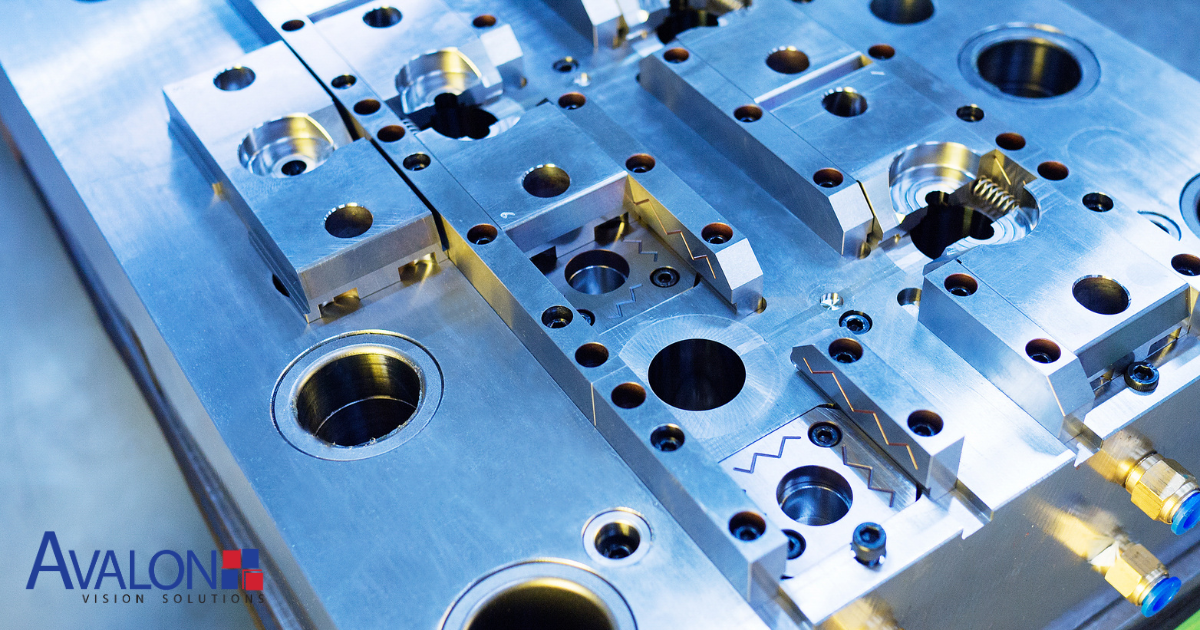In the world of injection molding and die-casting, ensuring product quality and preventing costly defects are top priorities. Machine vision systems play a crucial role in achieving these goals by providing automated inspection, detecting defects, and improving overall efficiency. However, choosing the right machine vision system for your molding operation requires careful consideration of several key factors. Here’s what you need to know.
1. Identify Your Inspection Needs
Every molding operation has unique requirements. Determine what aspects of the production process need monitoring. Common inspection tasks include:
- Presence/absence detection – Ensuring all parts and inserts are correctly placed before and after the molding cycle.
- Defect detection – Identifying surface defects, short shots, or flash.
- Dimensional inspection – Measuring critical dimensions to maintain part consistency.
- Cavity and core monitoring – Checking for stuck parts, misalignment, or incomplete ejection.
2. Consider the Operating Environment
Molding environments often present challenges such as high temperatures, vibrations, and contamination. Select a vision system designed to withstand these conditions without compromising performance. Look for:
- Ruggedized cameras and enclosures
- Non-contact inspection methods
- Reliable lighting solutions to enhance image clarity
3. Choose the Right Camera Technology
Machine vision systems come with different types of cameras, including:
- 2D cameras – Ideal for basic inspections such as presence verification and surface defects.
- Infrared or thermal cameras – Useful for detecting temperature variations that may indicate process issues.
4. Evaluate Processing and Integration Capabilities
Ensure the vision system can seamlessly integrate with your existing molding equipment and automation setup. Key considerations include:
- Processing power – Advanced vision systems provide real-time decision-making and defect classification.
- Communication protocols – Compatibility with PLCs, industry standard robotic systems, and factory networks.
- User-friendly software – Intuitive interfaces and configurable settings for easy operation and minimal downtime.
5. Assess Scalability and Future-Proofing
Your production needs may evolve, so choose a system that can grow with your operation. Look for:
- Modular systems that allow additional cameras or sensors.
- Software updates and AI advancements to improve performance over time.
- Remote monitoring and diagnostics to minimize maintenance efforts.
6. Compare Costs vs. ROI
While upfront costs are a consideration, the long-term benefits of reduced scrap, improved efficiency, and minimized downtime often justify the investment. Conduct a cost-benefit analysis by factoring in:
- Defect prevention savings
- Reduction in manual inspections
- Improved cycle times and productivity
- Ease of implementation vs custom developed systems
- Complete product solution at time of purchase (not just a vision computer and camera)
7. Reliable after-sale support
While a solid vision system and well trained personnel are key to a successful continuous operation, a reliable and knowledgeable support team will always be of the utmost importance when unforeseen challenges arise.
Final Thoughts
Choosing the right machine vision system for your molding operation is a critical decision that impacts quality, efficiency, and profitability. By carefully assessing your needs, selecting the appropriate technology, and ensuring seamless integration, you can make an informed choice that enhances your production capabilities.
Looking for expert guidance? Avalon Vision Solutions offers cutting-edge vision inspection systems tailored for injection molding and die-casting applications. Contact us today to find the perfect solution for your operation.


